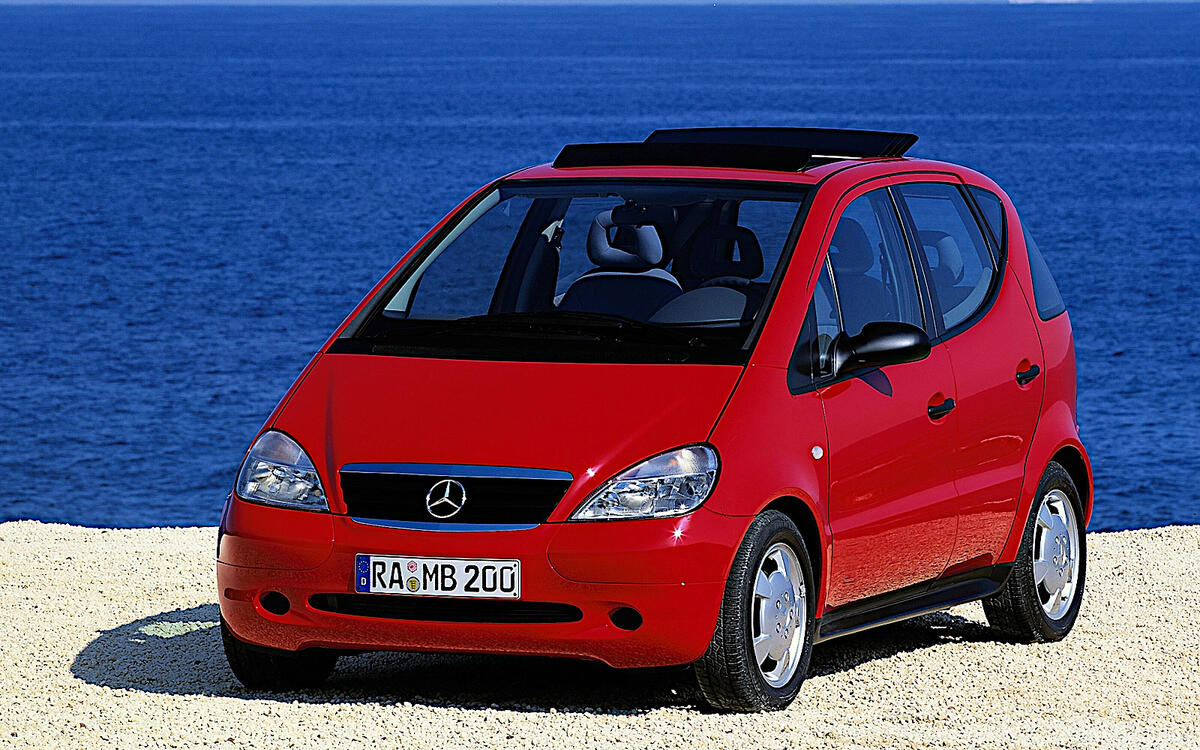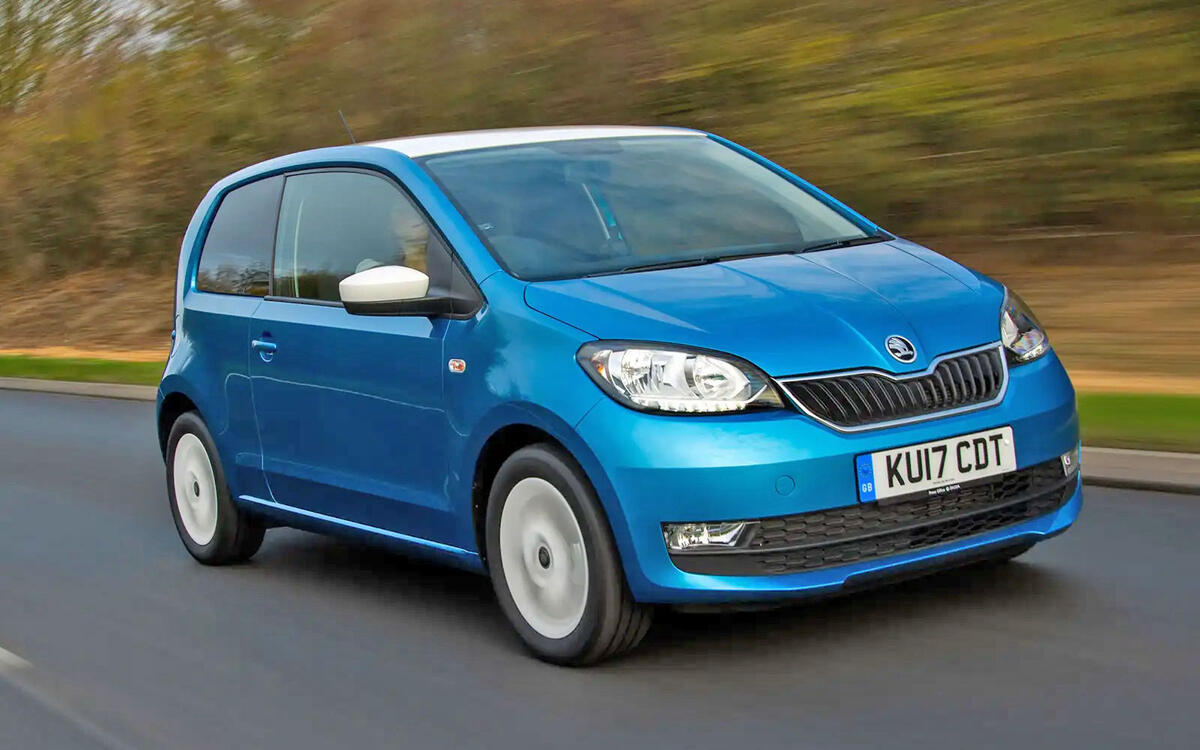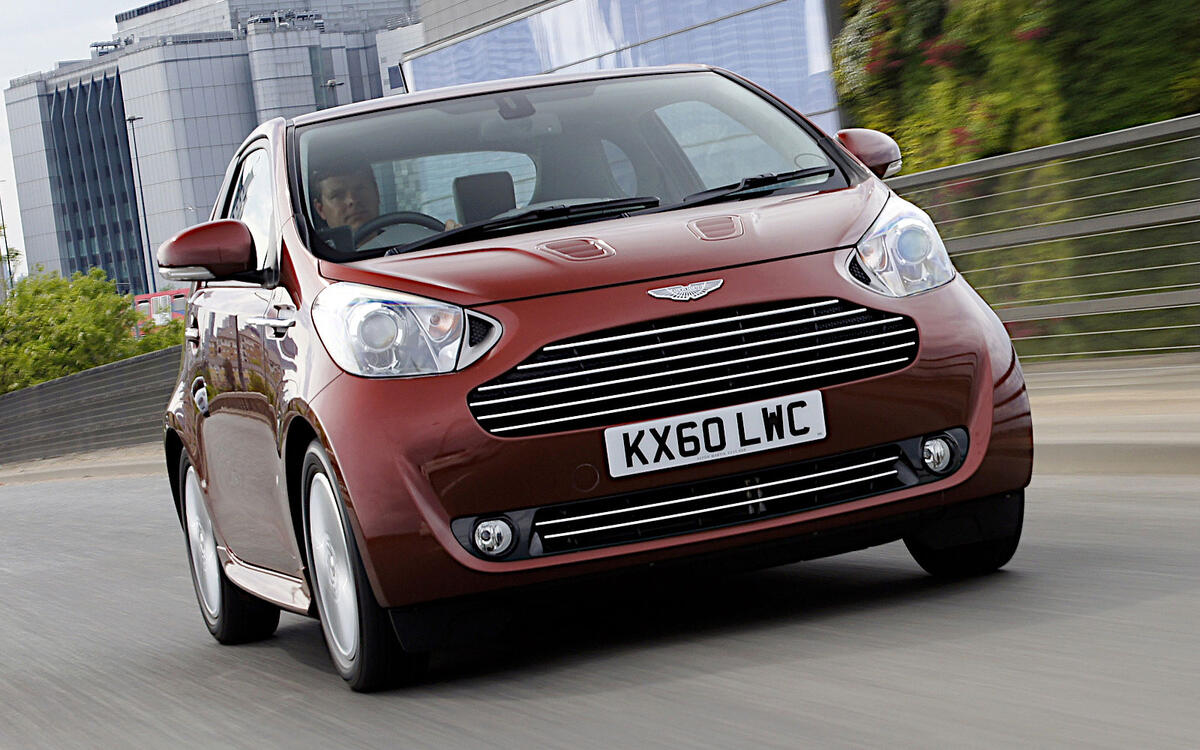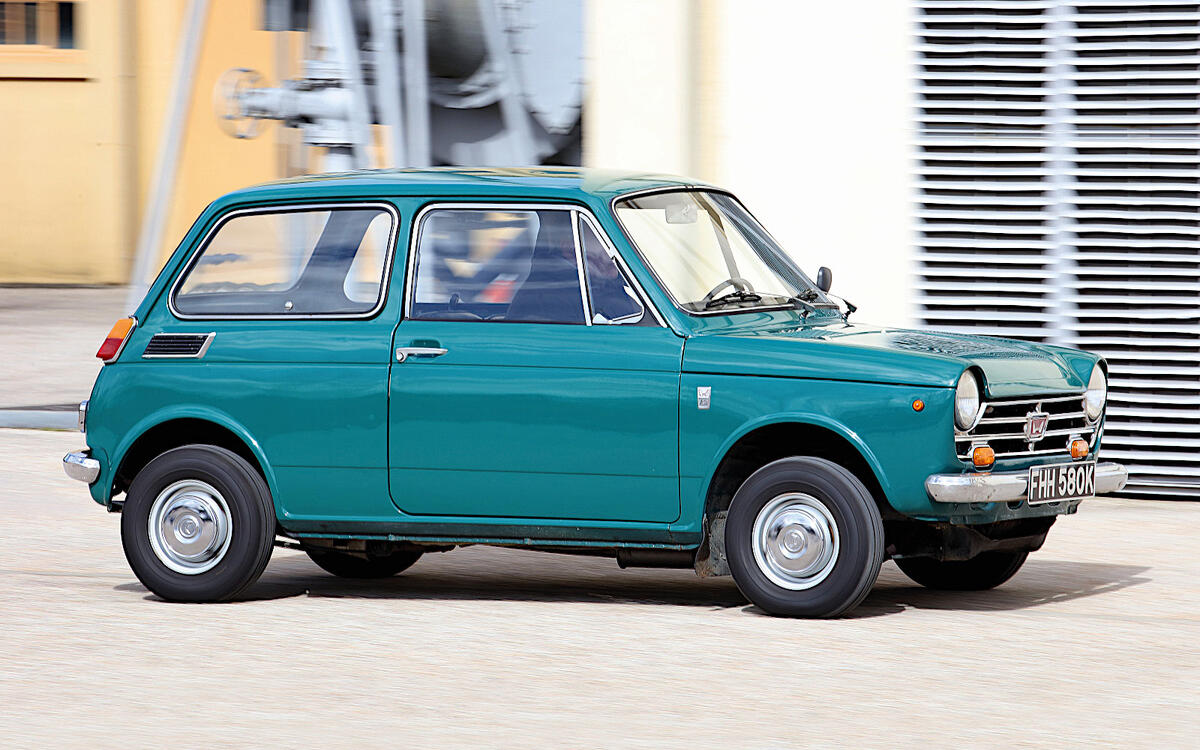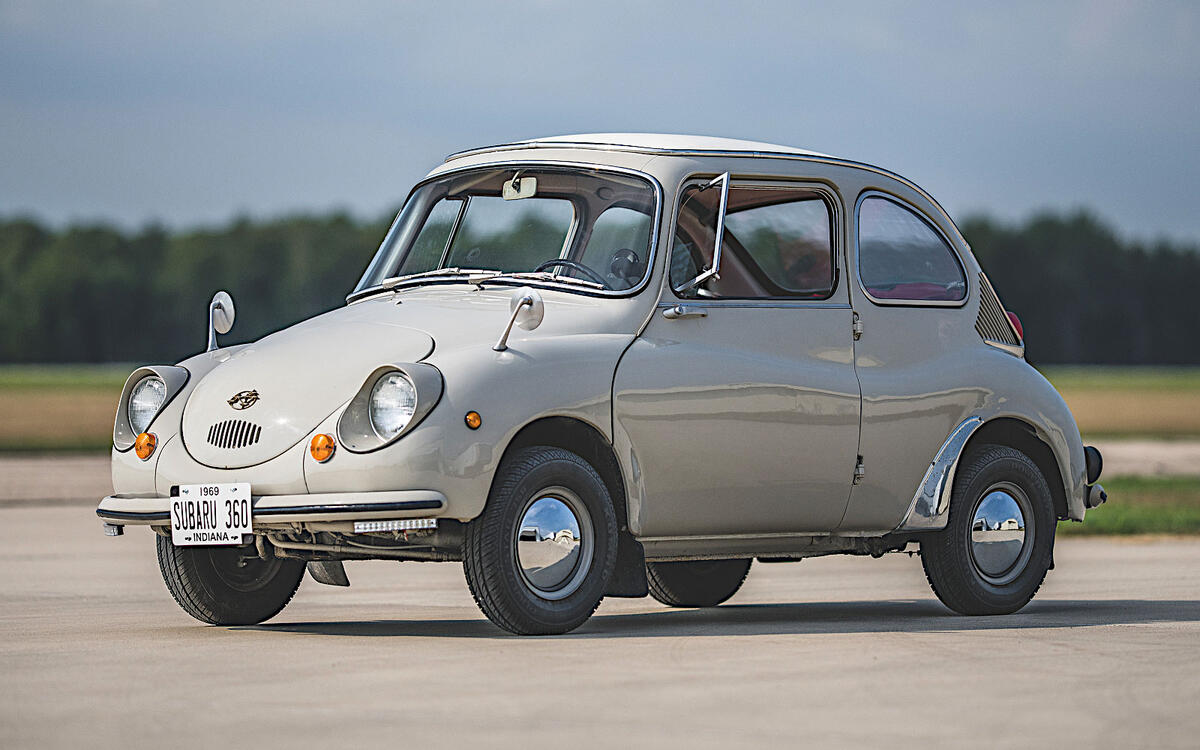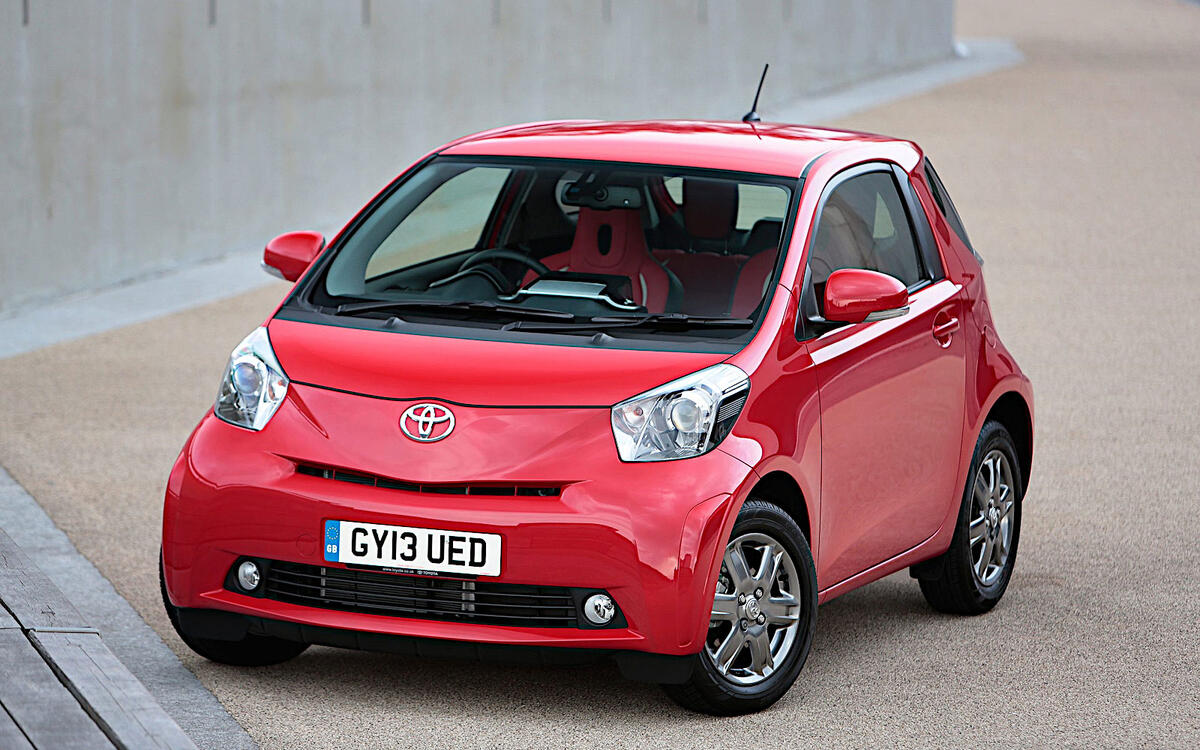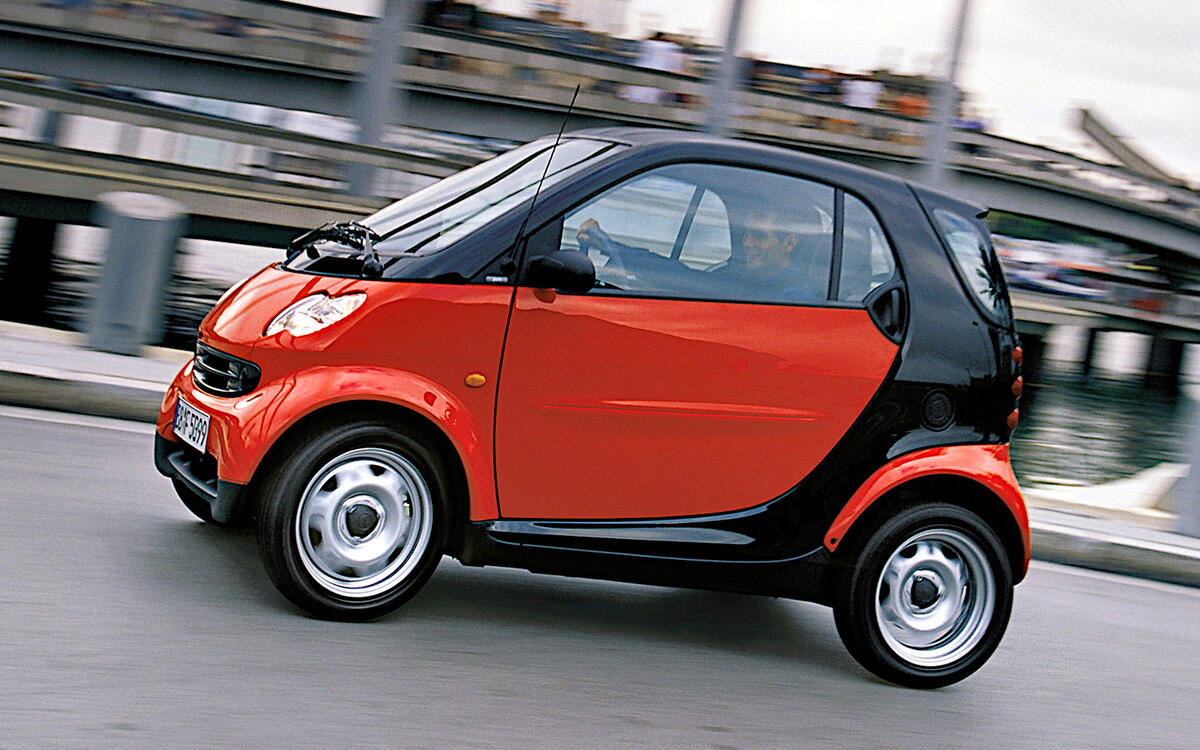 Slide of
Slide of
Very occasionally a manufacturer devotes itself entirely to a single car, such as the Tucker 48 or the Clan Crusader.
There will usually be one model which is the smallest the company has ever made.
 Slide of
Slide of
So let’s have a look at them. Here, in descending order of length – or ascending order of shortness, if you prefer – are the cars from 30 brands which had the least distance between their fronts and rears.
We’re including only passenger vehicles from brands which still exist today, though our first example involves one which is now a sub-brand within GMC.
 Slide of
Slide of
Hummer H3
Hummer is renowned for producing very large vehicles, but since its portfolio includes several models it stands to reason that one of them must be shorter than the others.
That model is the H3, based on a similar platform to the one used for the Chevrolet Colorado and GMC Canyon pickup trucks. In SUV, rather than pickup, form, it measured 4782mm (188.3in), figures whose like you won’t be seeing again in this article.
 Slide of
Slide of
DS 3
The DS 3 first appeared in 2010 as a premium variant of the Citroen C3. Six years later, the Citroen badge was dropped when DS Automobiles was established as a separate brand.
Several new DS models have been introduced since then, including a second-generation 3, but the first remains the shortest at 3948mm (155.4in).
 Slide of
Slide of
Volvo 66
Volvo’s first car was the 1927 ÖV4, which measured 4150mm (163.4in). No shorter Volvo was produced until nearly half a century later. The later vehicle was a slightly reworked DAF 66, designed and manufactured by the Dutch Daf company, which Volvo bought in the mid 1970s.
Volvo made very few changes, retaining the little Renault engine and the then extremely unusual continuously variable transmission, but in the interests of safety it added larger front and rear bumpers, extending the car’s length by a few inches. Despite that, it became – and still is – the shortest ever Volvo, at 3900mm (153.5in).
 Slide of
Slide of
Alfa Romeo Giulietta Spider
Although it’s relatively rare, a few Alfa Romeos measuring less than four metres have gone into production. These include the Alfasud, the much more recent 4C and a version of the Renault Dauphine built under licence.
Shorter than all of these, however, is the Spider version of the 1950s Giulietta. According to the Museo Storico Alfa Romeo in Arese, which owns one, it measures 3860mm (152.0in).
 Slide of
Slide of
Chrysler Sunbeam
The smallest Chrysler-badged car was a UK model built by Chrysler Europe at the Linwood factory in Scotland from 1977 to 1981. Latterly badged as a Talbot, it was 3830mm (150.8in) long from bumper to bumper, a measurement which would be inconceivable for any Chrysler built in the US.
A still smaller Linwood-built car known variously as the Hillman Imp, Singer Chamois and Sunbeam Stiletto was sometimes referred to (including on the covers of workshop manuals) as the Chrysler Imp, but it does not appear to have been sold under that name.
 Slide of
Slide of
Alpine A106
The first sports car produced by Dieppe Renault dealer Jean Rédélé (1922-2007) was manufactured using components from the Renault 4CV. There’s a limit to how large anything powered by a 750cc engine can be, and sure enough the A106 was notably petite at 3700mm (145.7in).
Alpine’s only current model, the A110, is small by modern standards, but at nearly 4.2 metres it dwarfs the much earlier A106.
 Slide of
Slide of
Mercedes A-Class
Today’s A-Class has almost nothing to do with the original model launched in 1997. This curious machine had a lot of interior space due to its height rather than its length, which was exceptionally modest for a Mercedes-badged car.
It started out at 3575mm (140.7in), but increased to 3606mm (142.0in) during a 2001 facelift. Even the long-wheelbase version was comfortably under four metres at 3776mm (148.7in).
 Slide of
Slide of
Skoda Citigo
The Citigo was Skoda’s only city car to date, and measured just 3540mm (139.4in). It was almost exactly the same thing as two other small VW Group products, the Seat Mii and the Volkswagen up!. Of the trio, however, it was the only one which can be said to have been the shortest in the history of its brand.
 Slide of
Slide of
Audi 50
The 50 was an anomalous car for Audi. Launched in 1974, it was the brand’s first supermini, quite unlike any other model wearing the same badge. It didn’t last for long as an Audi, but had much more success as the first-generation Volkswagen Polo.
Audi did not try anything like this again until the A2 was introduced in the late 20th century. It’s now thought of as a small car, but it was a giant compared with the 50, which was around 3500mm (137.8in) long, depending on who you ask. The ‘little’ A2 was more than a foot longer.
 Slide of
Slide of
Volkswagen Polo
The Polo/50 is the shortest car yet produced by both Audi and Volkswagen, at approximately 3500mm (137.8in). Two of them parked front to back would be only slightly longer than VW’s largest current model, the Grand California 680.
The GTI version of the Lupo city car, which was very slightly shorter than the less powerful variants, ran the first-generation Polo close, but at 3524mm it exceeded the earlier model’s length by nearly an inch.
 Slide of
Slide of
Chevrolet Matiz/Lechi
GM’s Korean supermini has been produced across four generations since 1998. The first two versions both measured 3495mm (137.6in), though subsequent models have been somewhat larger.
The car has been marketed around the world under several names. Two of these are Chevrolet Matiz and Chevrolet Lechi, making this easily the shortest vehicle ever to wear Chevy branding.
PICTURE: UK-market Matiz with Daewoo branding
 Slide of
Slide of
Hyundai Amica and Eon
Also known as the Atos, Atoz and Santro, among other things, the Amica was a tall but narrow and short city car measuring just 3495mm (137.6in) from front to rear. The later Hyundai Eon, sold for most of the 2010s, was similar in concept and identical in length.
PICTURE: Hyundai Amica
 Slide of
Slide of
Kia Pride
The first of three models called Kia Pride was a clone of the Ford Festiva (also known as the Mazda 121) manufactured in South Korea from 1987 to 2000.
At 3475mm (136.8in), it was the shortest Kia-badged car ever sold. Even the little first-generation Picanto, which arrived three years after the original Pride was discontinued, was longer at 3535mm (139.2in).
 Slide of
Slide of
SEAT 600
Although it was really only a Fiat built under licence, the 600 was arguably Spain’s most important car, since it was partly responsible for the enormous post-war growth of the Spanish economy.
From 1957 to 1963, before it was slightly extended, the 600 measured just 3280mm (129.1in), making it far shorter than the Mii city car of the 21st century.
 Slide of
Slide of
Aston Martin Cygnet
In a move which must have seemed like a good idea at the time, but later proved not to be, Aston Martin briefly built its own luxurious, and eye-wateringly expensive, version of the Toyota iQ city car.
The unlikeliest of all Astons was also the shortest, taking up just 3078mm (121.2in) of road space. It could have been less than that, but a more prominent nose made the Cygnet slightly longer than the Toyota it was based on.
 Slide of
Slide of
Honda N360
Until 1976, when the rules were relaxed slightly, no car could be included in the Japanese kei class if it measured so much as a gnat’s crotchet over three metres. Like several other models of its place and time, some of which we’ll be discussing in a moment, the Honda N360 just squeaked under this with a length of 2995mm (117.9in).
The related N600 did not qualify, partly because it was 3100mm (122.0in) long and partly because its engine was too large.
 Slide of
Slide of
Mitsubishi Minica
Mitsubishi produced Minica kei cars in eight generations over half a century. For the first two generations and most of the third, they all measured 2995mm (117.9in).
In January 1976, the maximum permitted length of a kei car was raised from 3.0 to 3.2 metres. Mitsubishi responded by fitting larger bumpers to the Minica, increasing its length to more than 3000mm for the first time.
PICTURE: 1962 Minica
Photo licence: https://creativecommons.org/licenses/by-sa/3.0/legalcode
 Slide of
Slide of
Subaru 360
Throughout its life, Subaru’s first car was subject to the kei car limit of 3.0 metres. Several lengths have been quoted for this model, but 2995mm (117.9in) is both the most common and the most likely.
It also applies to the 360’s successor, the Rex, and to early versions of the later R-2, which grew when the kei rules were altered in 1976.
 Slide of
Slide of
Suzuki Fronte
In what must now have become a familiar tale, all Suzuki Fronte kei cars measured 2995mm (117.9in) in the days when they were not allowed to be more than 3.0 metres long.
The earlier Suzulight models, which were built by Suzuki but did not carry the company’s branding, are reported to have been very slightly shorter, at 2990mm (117.7in).
 Slide of
Slide of
Toyota iQ
Toyota has built many short cars over the years, but it excelled itself with the iQ (marketed in the US as a Scion) which was produced from 2008 to 2016. At 2985mm (117.5mm) it easily met the current kei car regulations as far as length was concerned, though all the engines it was fitted with were far too large to qualify.
Oddly, the iQ was much shorter than the 3395mm (133.7in) Toyota Pixis Joy, a rebadged version of the Daihatsu Cast which definitely was a kei car.
 Slide of
Slide of
Cadillac Model A
The first cars produced by manufacturers established around the turn of the 20th century were often extremely small, so you’ll be reading about several of them here.
We’ll start with the original Cadillac, which first appeared in the 1903 model year. The Henry Ford Museum in Dearborn reports that the Model A Runabout in its collection is a mere 2807mm (110.5in) long. For reference, two of them could just about hide behind a single example of today’s Cadillac Escalade ESV.
 Slide of
Slide of
Ford Model A
The Ford Motor Company’s first car bore a close resemblance to the Cadillac of the same name, a coincidence partly explained by the fact that Cadillac rose from the ashes of Henry Ford’s first company that he departed in 1902.
There were important differences, though. Each car had its own engine, and the Ford was shorter. According to the Henry Ford Museum, which has an example of both Model As, its Ford measures 2616mm (103.0mm).
 Slide of
Slide of
smart fortwo
The original smart became known as the fortwo after several years to distinguish it from the much larger forfour supermini.
Although its passenger compartment was impressively spacious, there was very little either in front of or behind it. In its first generation, the car was only 2500mm (98.4in) long. Later models have reached nearly 2.7 metres.
 Slide of
Slide of
Vauxhall 5hp and 6hp
The Vauxhall 5hp went on sale in May 1903, and was replaced the following February by the 6hp, which was basically the same car with a larger engine, a reverse gear and, latterly, a proper steering wheel rather than a tiller.
Both were 2489mm (98.0in) long, a figure Vauxhall never approached again. The 12-14hp model, which went into production before the end of 1904, was very much larger.
 Slide of
Slide of
Citroen Ami
Citroen has been building small cars for many decades, but the shortest of all went on sale only recently.
The all-electric Ami - named after, but not related to, another Citroen introduced in 1961 - is designed primarily for urban use, and measures only 2489mm (94.9in), which would have been considered modest even in the early 1900s. The Ami has space for two, a single-charge range of 46 miles, has a top speed of 28mph, and can be purchased from £8095 in the UK.
 Slide of
Slide of
Fiat 3.5hp
The first Fiat was created by the Italian Welleyes brand, which had until then built only bicycles. The project was taken over by Giovanni Agnelli (1866-1945), who changed the car’s name and put it into production in 1899.
Almost every part was contained within the space between the front and rear axles, which were very close together. The whole contraption was just 2300mm (90.6in) long.
 Slide of
Slide of
Peugeot Type 2
The Type 2 is generally referred to as Peugeot’s inaugural production car, though only four were built and it took nearly a year to sell the first one. Introduced nearly a decade before the Fiat 3.5hp, it was coincidentally shared that car’s length of 2300mm (90.6in). This makes it even shorter than both the Peugeot VLV, a tiny electric city car built during the Second World War, and the minuscule BB1 electric concept displayed at the Frankfurt Show in 2009.
 Slide of
Slide of
BMW Isetta
BMW acquired the rights to build the Isetta bubble car from Italian company Iso, and almost completely redesigned it while retaining the same basic shape.
Different sources quote very different lengths for the revised car. BMW’s own figure is 2280mm (89.8in), which makes the Isetta very nearly a foot shorter than the 2570mm (101.2in) wheelbase of the company’s smallest car produced so far in the 21st century, the i3, which totals 4011mm in length.
 Slide of
Slide of
Opel Patent Motorwagen
The full name of Opel’s first car is Patent Motorwagen System Lutzmann, after Friedrich Lutzmann (1859-1930), from whom Opel bought the rights to produce it.
Sources generally agree that the machine was 2150mm (84.6in) long, which seems about right from the available photographs and film footage.
 Slide of
Slide of
Renault Voiturette
Renault became a car manufacturer as a direct result of founder Louis Renault (1877-1944) successfully climbing the steep Rue Lepic in Paris in his prototype Voiturette, impressing onlookers to such an extent that they wanted similar vehicles of their own.
Like the prototype, they were absolutely tiny, even by the standards of 1899 - from stem to stern, they measured 1860mm (73.2in). By comparison, the electric Twizy, today considered an extremely short vehicle at 2338mm (92.0in), seems like a sprawling monstrosity.
Access control:
Open









